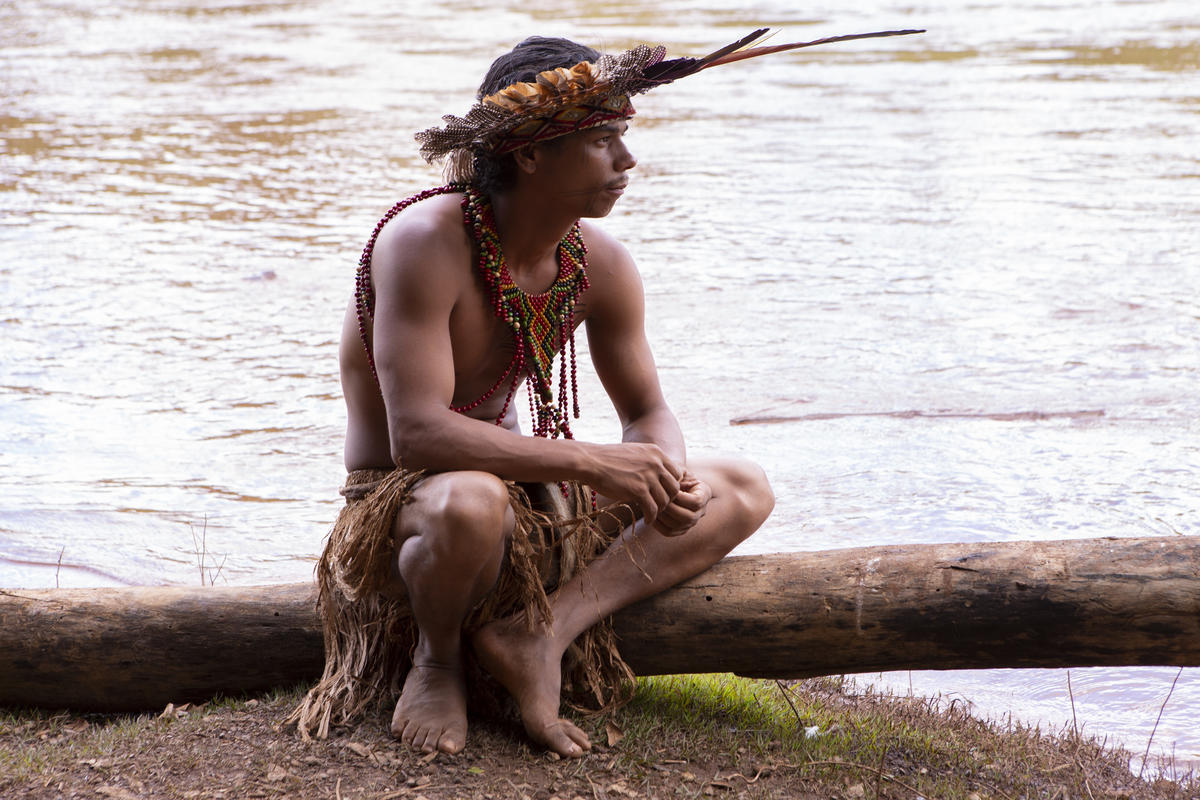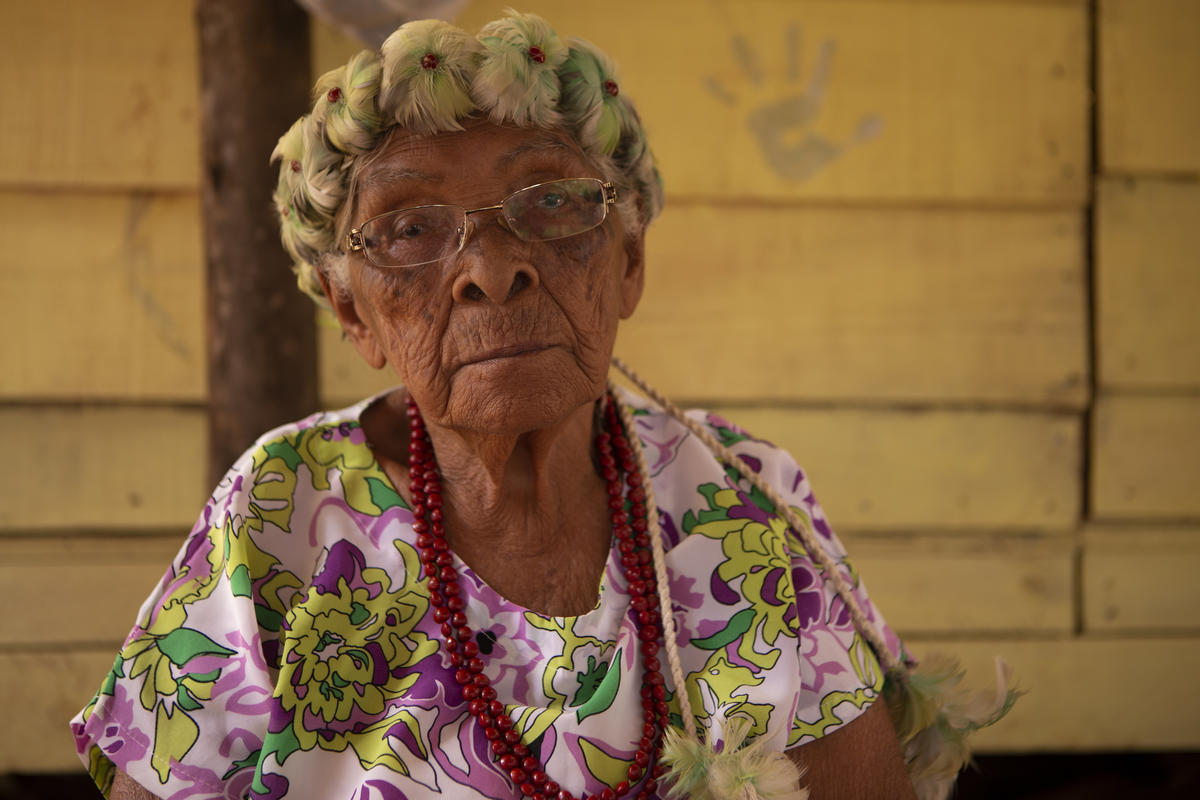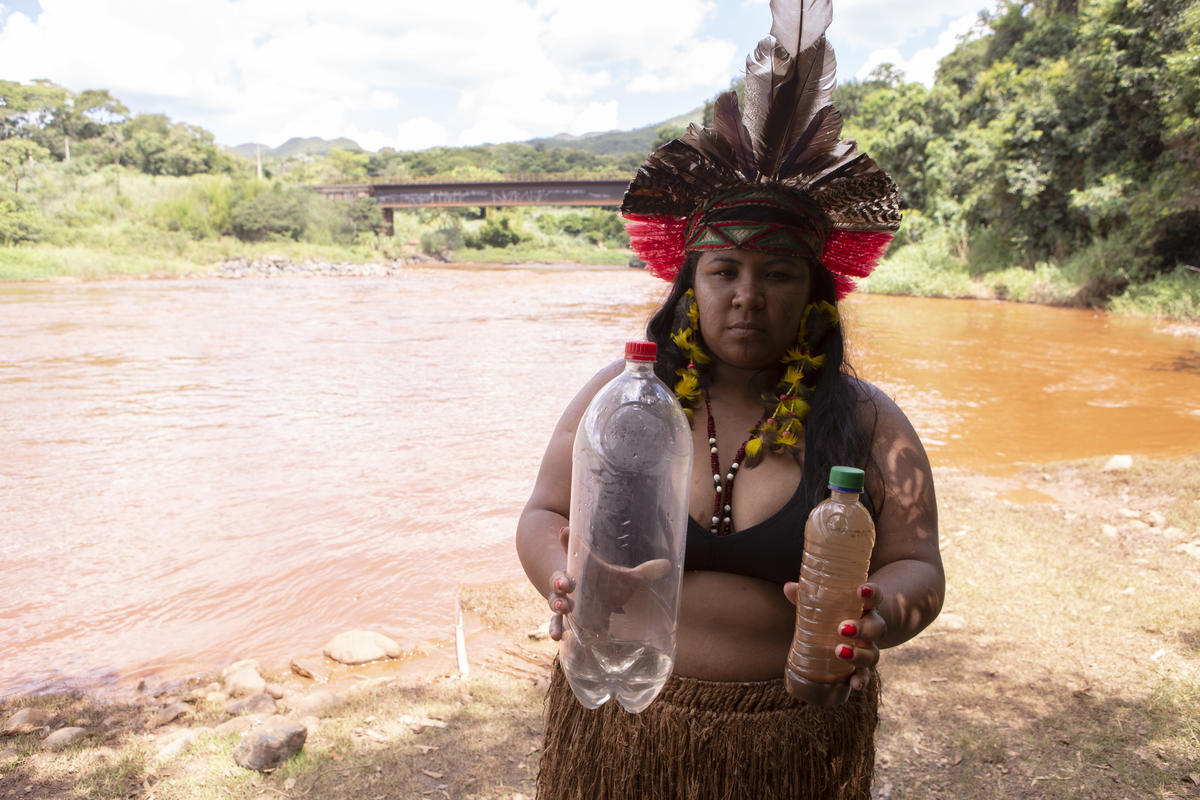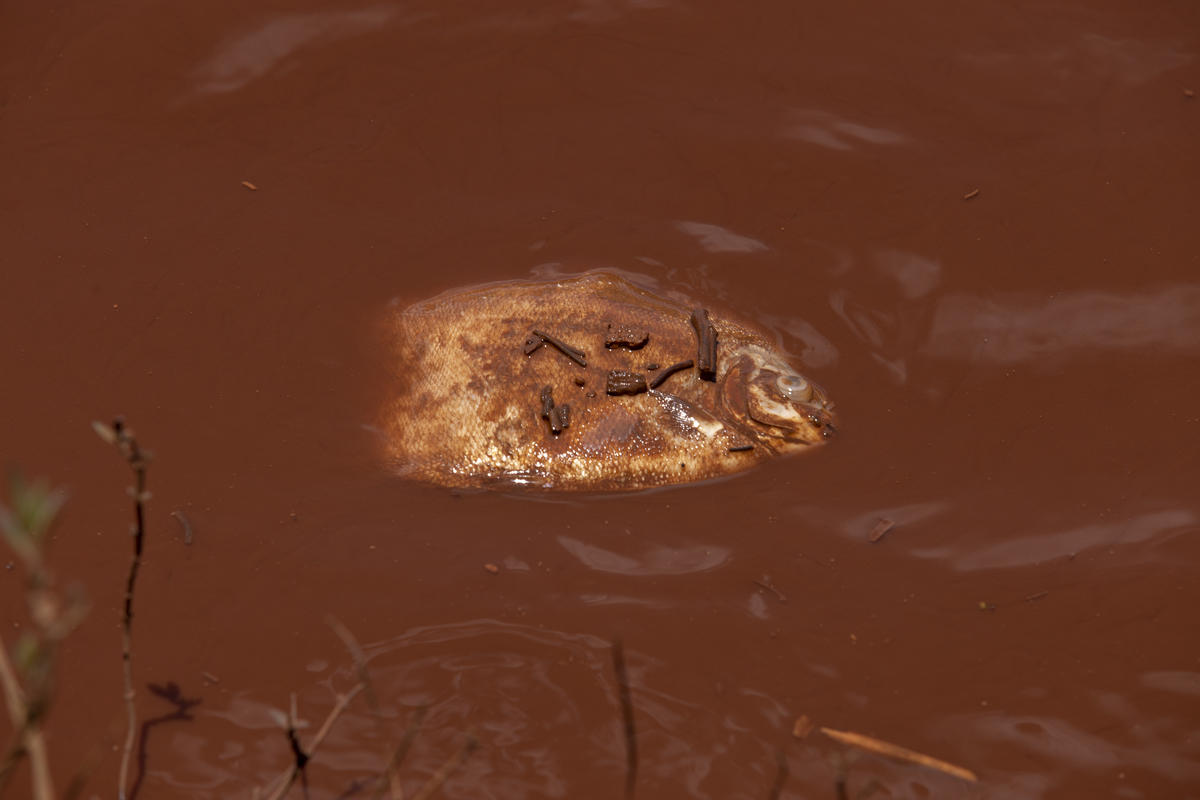Four days after the disaster, we headed to the Naô Xohã village, located 22 kilometres from the dam.

Háyô
Hã-hã-hãe, Leader of the Pataxó village Hã-hã-hãe Naô Xohã, stares at
the Paraobeba River, filled with mining waste. © Nilmar Lage
“At first, we were hit by desperation because a similar tragedy has happened before and we all know the consequences of that,” said Werymerry. She’s referring to the mining dam collapse in Mariana —also in the state of Minas Gerais — in 2015, that killed 21 people, destroying a river and the livelihoods of hundreds of people. That dam was also operated by Vale.
“We gathered the most vulnerable people in our village and took them to the top of the hill until we could assess what the real situation was. I felt powerless because the lives of the people of our village depend on us, and, as a leader, this made me feel lost.” There are seven pregnant women, two elderly residents, and 19 children currently living in the village.

Antônia Remunganha, the oldest person of the Pataxó Hã-hã-hãe Naô Xohã Village. “What will become of us?” © Nilmar Lage
“It’s such a painful tragedy. Many people died, and so did the fish that were our main source of food. Now you can’t catch a fish and eat it. The waters of the river turned into toxic mud. What will become of us?”
On the bank of the Paraopeba River, the smell of dead fish made me nauseous. To reduce the strong odor and avoid the mosquitoes, the village residents are burying the fish. Without their primary source of food and water supply, they are relying on donations. As of our visit, Vale had not yet contacted the community.

Werymerry
Hã-hã-hãe, Deputy Leader of the Pataxó village Hã-hã-hãe Naô Xohã, with
samples of water before and after the mud reached the Paraopeba River. ©
Nilmar Lage
“The Earth is vomiting. She is sick. Everything that destroys nature destroys itself,” she said, emphasizing the importance of that body of water to the community. “Our relationship with the river is very special because the Pataxó came from a drop of water that fell on the Earth.”

Dead fish in toxic-mud-filled Paraopeba River, near the Pataxó Hã-hã-hãe Naô Xohã Village. © Nilmar Lage
Hayô is concerned about the new government’s proposal to allow mining in Indigenous lands, especially when lack of transparency and compliance with regulations leaves mining companies virtually above the law.
He says, “We must respect nature and say ‘no’ to mining companies.”
In the Pataxó language, Naô Xohã means “Warrior Spirit.” We left the village sure that the Pataxó will fight to the end for the preservation of their people and their territory. Because, as the Chief Hayô told me, “if there’s no nature, we can’t be the Pataxó people.”
Our visit to the Naô Xohã village was supported by Cimi, the Indigenous Missionary Council, which is a body under the National Conference of Bishops of Brazil – CNBB.
Mariana Campos is a storyteller at Greenpeace Brazil. Greenpeace activists are in Brumadinho in Minas Gerais State, Brazil, documenting the tragedy and demanding justice for the people and the environment.

No comments:
Post a Comment
Note: Only a member of this blog may post a comment.